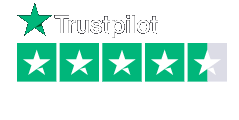Increasing web traffic is the one of six magic numbers that can dramatically increase your online sales. Increasing your web traffic does not need to be expensive. Here are the top 9 ways to drive more visitors to your website.
1. Advertise
Blindingly obvious I know, but you’d be surprised just how few businesses advertise their website. Paid search, social media advertising and display advertising are all excellent ways of driving visitors, building your brand and making sure people can see your site.
Remember that more traffic to your site may not necessarily increase your sales. To increase sales you need to target high intent keywords as part of your paid search strategies.
2. Write Irresistible Headlines
Headlines are the most important part of your content. If you don’t have a headline that grabs the reader’s attention, even the best blog in the world will go unread. It can be a difficult skill to master, but it is essential to ensure your content gets read, so think very carefully about your headline before you hit “publish.”
3. Keep It Fresh
There is no magic formula for content marketing success. Your content should vary in style and size, and should be written to match your customer personas. Use different types of content e.g. news-based blog posts, as well as video, infographics and data-driven pieces for maximum impact.
4. Be Social
It’s not enough to produce great content and hope that people find it — you have to be proactive. One of the best ways to increase traffic to your website is to use social media channels to promote your content.
You can use Twitter to promote short, snappy (and tempting) links, and LinkedIn works well for B2B niches.
Pinterest and Instagram normally work well, if you’re a B2C product company. Make sure your imagery is engaging and attracts your audience.
Facebook works well for both B2B and B2C. Don’t forget that business owners have down time too, and use social media, just like the rest if us.
5. On-Page SEO is important
Optimizing your content for search engines is still a very valuable and worthwhile practice. Make sure you make the most image alt text? All your content should contain internal links to other content. You should have content that is ‘clustered’ together with other similar and related content.
6. Start Guest Blogging
If your content is good (and I mean really good), it is still a very valuable tactic to post blogs on 3rd party sites. It is especially useful if you can get your content posted on a site which is ranked highly by Google. Not only will you increase your SEO presence, you will increase your brand awareness into the bargain. A word of caution though — make sure you don’t use spammy content, as the penalties can be harsh.
7. Long-Tail Keywords
I’ve already talked about advertising, but don’t forget to target long-tail keywords. Approx 80% of search use long-tail keywords so make sure they are part of your advertising and SEO strategy.
8. Go After Referral Traffic
Don’t waste time trying to get other sites to link back to you — it will take a huge amount of time and will produce very little return. Instead, create content that others WANT to link to. Give readers the option to share your blog with others - explain how they can do it, but make sure that your links only come from reputable sites.
9. Post Content to LinkedIn
Engage with your potential customers by posting your content on LinkedIn. There is a lot of content so make sure that you are active on LinkedIn. Share and comment on other content if you expect others to do the same with your content.









